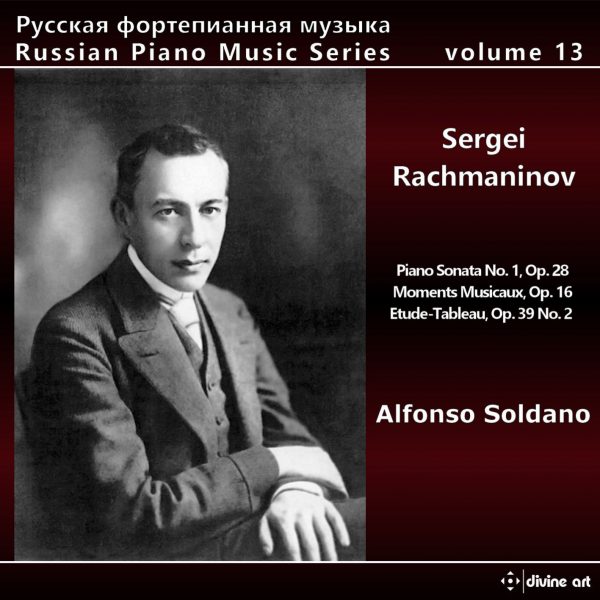Fanfare
This is Volume 13 of Divine Art’s Russian Piano Music Series. Rachmaninoff’s titanic First Piano Sonata, placed last on the program, is a test for any pianist; Alfonso Soldano passes convincingly. The first movement is rhythmically flexible but always musical; the all-important inner-voice lines are projected well. The middle section of the second movement builds up to an extraordinary level of tension. In the third movement Soldano produces impossible amounts of sound. At 40:20, Soldano’s is the longest of the dozen or so versions of this sonata that I have reviewed, but he never seems slow. Only in places does the playing seem a bit underinflected, and in the coda of the second movement Soldano’s touch is a bit heavy. Still, this is one of the more compelling versions of this sonata.
I was less convinced by Soldano’s reading of the Moments musicaux. No. 1 is unsubtle and plods a bit; in the reprise Soldano plays undifferentiated sextuplets (see the discussion of this passage in my review of Karine Poghosyan’s recording, also in this issue). He plays the revised version of No. 2. In No. 3 he skips the repeat. This piece seems harsh and percussive here, even at mf. The rhythmic shifts in No. 4 seem arbitrary, and No. 5 has a heavy touch. In No. 6 the playing seems la¬bored; there is too much emphasis on the bass line, and in the B section the melody in the inner voices is swallowed up by the figuration. In the Etude-Tableau in A Minor, op. 39/2, Soldano fails to make his extremely slow tempo cohere; the Poco piu vivo is much faster.
Soldano is by far most convincing in the sonata; still, he isn’t quite at the level of Martin Cousin, Hannes Minnaar, and Rustem Hayroudinoff in this work. Recommended only for serious students of this sonata, and not for the other works here.
@divineartrecordingsgroup
A First Inversion Company
Registered Office:
176-178 Pontefract Road, Cudworth, Barnsley S72 8BE
+44 1226 596703
Fort Worth, TX 76110
+1.682.233.4978












